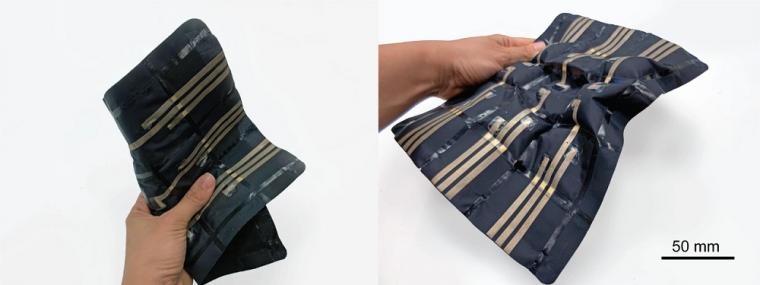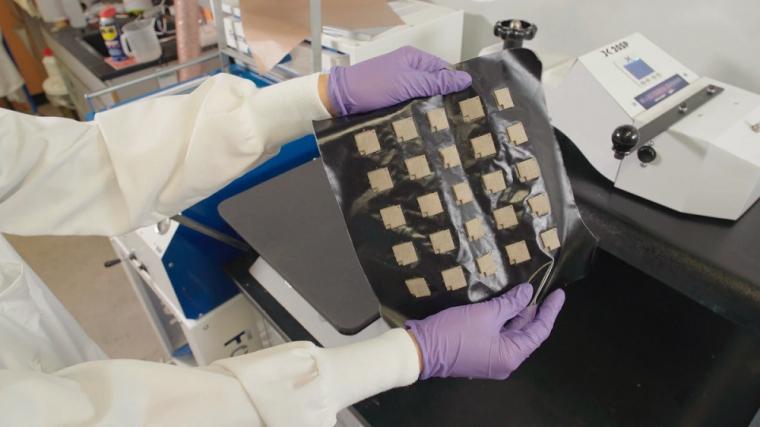This article has been adopted from : https://tectales.com/bionics-robotics/robotic-textiles-could-enable-new-mechanotherapy.html

A new smart fabric that can be inflated and deflated by temperature-dependent liquid-vapor phase changes could enable a new range of medical therapeutics and industrial applications.
Soft robots are on the rise largely because of their ability to interact with and conform to the human body in ways that stiff and rigid robots cannot. As wearable devices that often use specially engineered fabrics, soft robots are starting to become the basis for new rehabilitation therapies, or as enhancements that protect wearers while they perform strenuous tasks. Meanwhile, as non-wearable but independently functioning devices, textile-based soft robots could enable new mechanotherapies to help tissues such as muscles and their activating nerve fibers repair damage, or prevent damage to them in the first place by applying physical forces at the right frequency in precise locations.
Besides specialized fabrics, textile-based soft robots need “actuating” and “sensing” systems that, respectively, induce their motions and allow them to literally feel their own state and the environments they interact with. So far, the majority of textile-based soft robots are pneumatically actuated, which means that they are tethered via bulky tubing to external, often noisy compressors that modulate air-pressure within them so they can change their structures and motions.
Now, a highly multidisciplinary team of researchers from Harvard University’s Wyss Institute for Biologically Inspired Engineering, John A. Paulson School of Engineering and Applied Sciences (SEAS), and Department of Chemistry and Chemical Biology has developed Smart Thermally Actuating Textiles (STATs) that induce pressure changes by electrically controlling liquid-vapor phase changes in robotic textiles, eliminating the need for pneumatic tethers and opening up new textile robotic applications.

To be able to actuate these pressure changes in a programmable fashion and allow the system to regulate itself, we manufactured electronically-conductive silver-plated threads into the fabric that form the textile-based heater and sensor elements and enable the desired temperature and pressure control inside the pouches,” said co-first author Christopher Payne, a research associate working closely with Sanchez on Walsh’s team. “With an integrated ‘closed-loop feedback’ controller, STATs autonomously maintained their pressure even when placed into environments in which the exterior temperature fluctuates, like close to an air tube that actively cools the system
The researchers manufactured STATs as tightly sealed pouches using a commercially available woven textile membrane coated with a layer of heat-sealable thermoplastic polyurethane and incorporating embedded electrically active components. By dynamically powering STATs’ electric components, an enclosed engineered fluid known as NovecTM 7000 is vaporized by heat and expands its volume up to 100-fold, allowing the robotic textiles to increase and decrease their internal pressure over a significant range.
